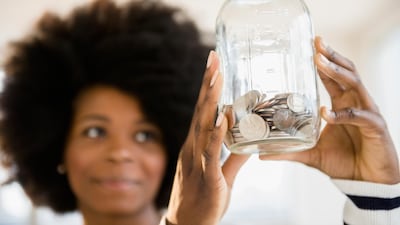For many, the emergency fund is not working out.
While some simply do not have one, of those that do many cannot resist tapping what they have already saved. I'd like to propose an alternative for both sets of people: The "oh, no" fund - a savings account for not-quite-emergency expenses.
One of the reasons people do not have emergency funds is misplaced optimism. People think that if they are healthy, they will stay healthy. If they are employed, ditto. The car will keep running, the AC won't break down and, since everybody's a better-than-average driver, there won't be any accidents. Behavioural scientists call that "recency bias," which is the delusion that whatever happened in the recent past will continue into the indefinite future.
Everyone, though, has experienced those "oh, no" moments: the no-parking sign they didn't see, the crown the dentist says they need, the smartphone dropped in the toilet. A relatively small amount in such a fund can keep people from turning to expensive credit cards.
The power of just a few hundred dollars of savings can really help reduce the use of short-term, high-cost lending, according to John Thompson. He is chief programme officer for the Center for Financial Services Innovation in the United States, a nonprofit that promotes financial health.
Having a cushion is particularly important if you are a homeowner. In a recent Harris Poll survey commissioned by NerdWallet, nearly two-thirds of homeowners in the US say they have experienced anxiety about their home, with unexpected home repair costs the top cause of anxiety.
The "oh, no" fund is designed to be spent, not hoarded. Emergency funds - which are designed to store the equivalent of three months' salary - are meant to be spent, too, but people are often reluctant to part with money labelled as savings, says financial literacy expert and Rutgers University professor Barbara O'Neill.
"People hate to experience losses, and pulling money out of a savings account feels like a loss," Ms O'Neill says.
______
Read more:
Personal finance in the UAE: Residents track finances better but struggle with saving and debt
New Dubai marketplace app lets UAE residents lend and hire personal items
The expensive bills you can now pay monthly in the UAE
______
Many people also give up on the idea of an emergency fund because any money they manage to put aside is quickly wiped out by unexpected expenses. They do not realise that the emergency fund did its job by keeping those expenses from going on a credit card, or that saving for unexpected expenses is a "rinse and repeat" deal. You don't just hit a savings goal and you're done. You save, you spend, and then you save again.
The "oh, no" fund can help people build that muscle. It can be viewed as a transactional account with constant additions and subtractions as life unfolds. The fund can also help people who already have savings they do not want to touch except in big emergencies, such as a job loss.
The first "oh, no" goal can be pretty modest, say Dh2,000. For those new to saving, here is how to get there:
• Set up a dedicated account
By keeping this account separate to your regular account, it is clearer to you what this balance is for. You could open it in a separate bank to make it harder to access or keep it in the same bank, so that it is easier to transfer funds into it on a regular basis.
• Automate it if you can
Those with regular monthly salaries and bank accounts can set up automatic transfers, so Dh100 or Dh200 a month - or whatever amount you like - gets swept into a savings account each pay period. If this account is based overseas, you could technology that automatically rounds up your purchases to the nearest dollar and deposits the money in savings. Bank of America's Keep the Change debit card and Chime, a mobile bank account, both offer this option. Or try Digit, an app that analyses your spending and moves unneeded funds to a savings account.
• If you cannot automate it, make a rule
Decide to put aside a set dirham amount or percentage from every pay cheque or other income you receive. For example, say to yourself: "I'll save Dh500 from every salary payment and 10 per cent of any windfalls."
• Don't stop
Once you are in the habit of saving, keep going. Your next goal can be Dh5,000, which is the median cost of the largest financial shock experienced by households studied by the Pew Charitable Trusts in the US. After that, you can shoot for the traditional emergency fund recommendation of building a fund equal to three months' worth of expenses.
Even as you do, though, you may still want to keep a separate fund for those everyday mishaps. Because things go wrong - all the time.
Liz Weston is a columnist at NerdWallet, a financial planner and author of Your Credit Score

